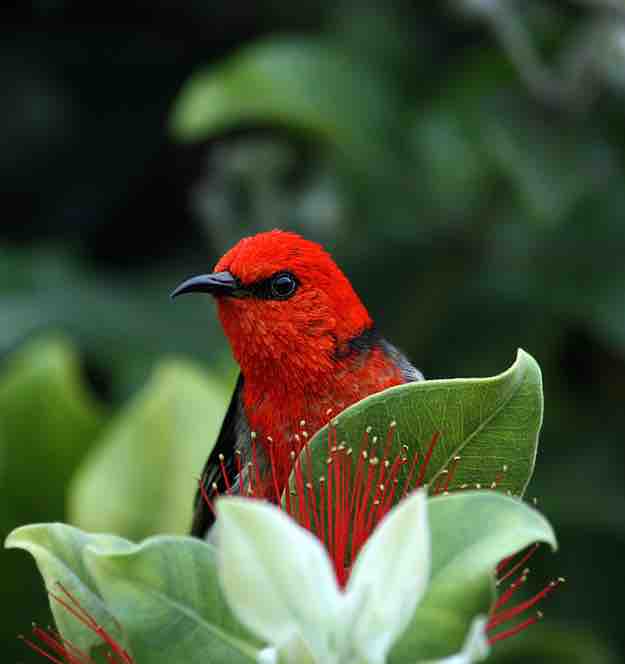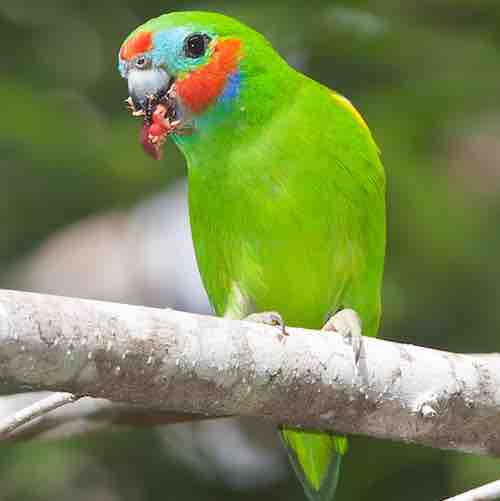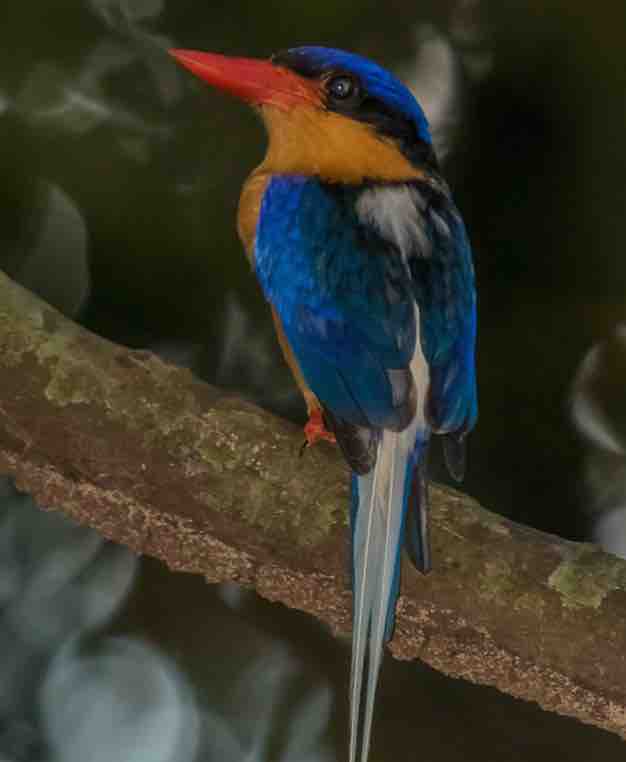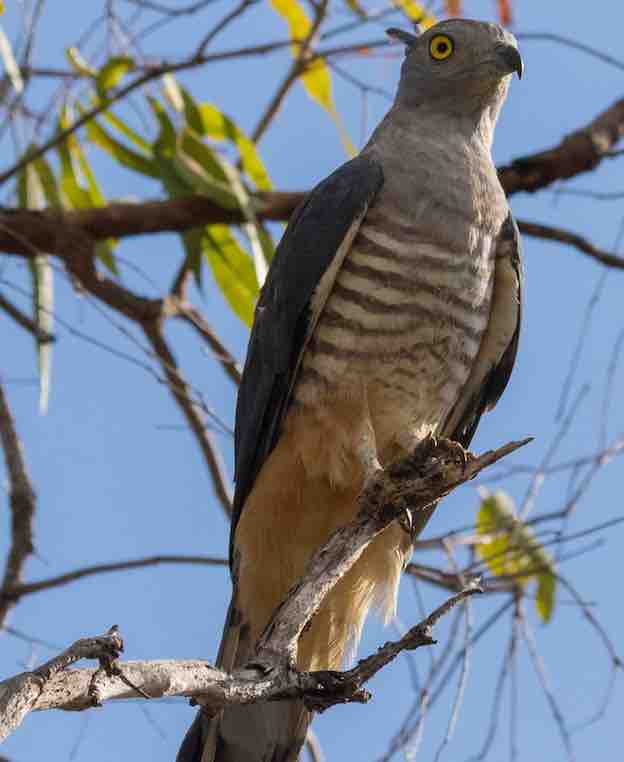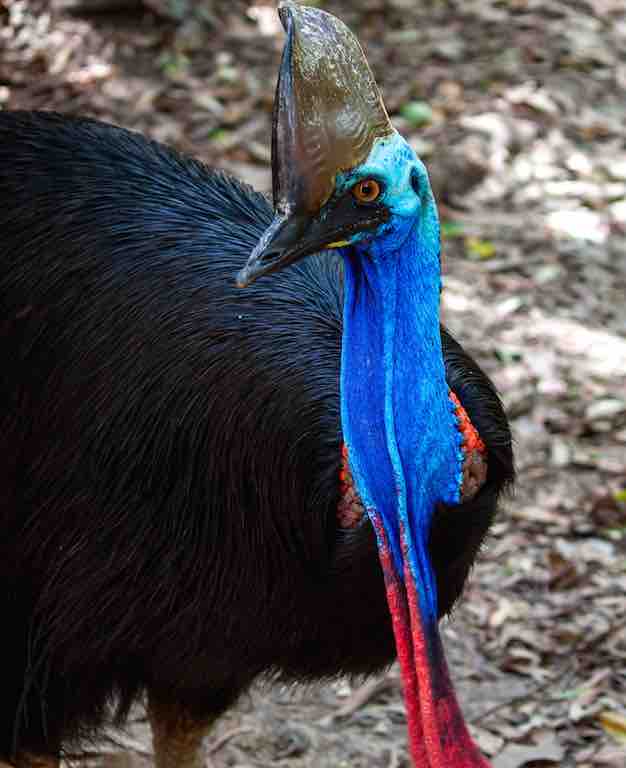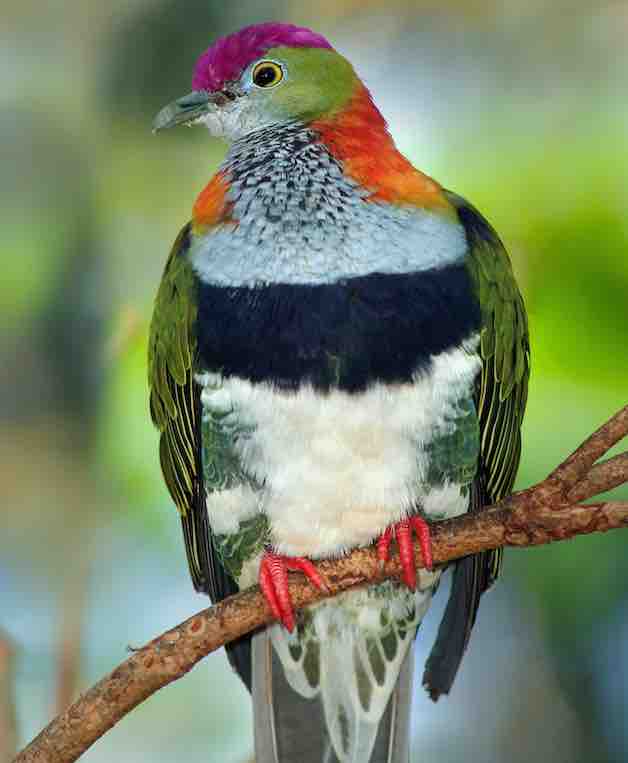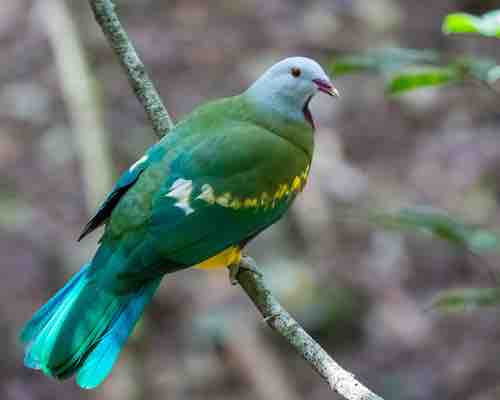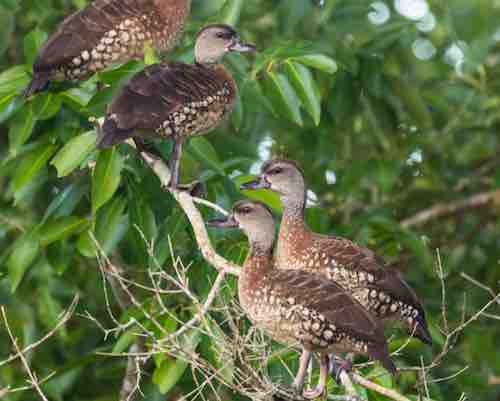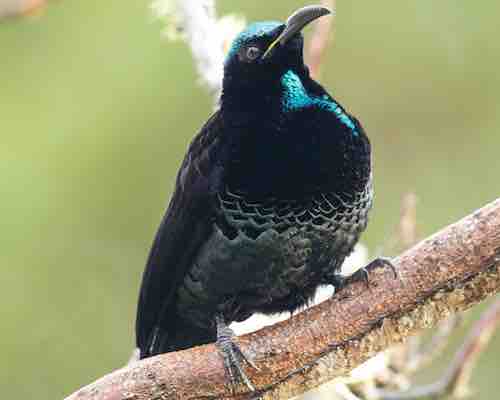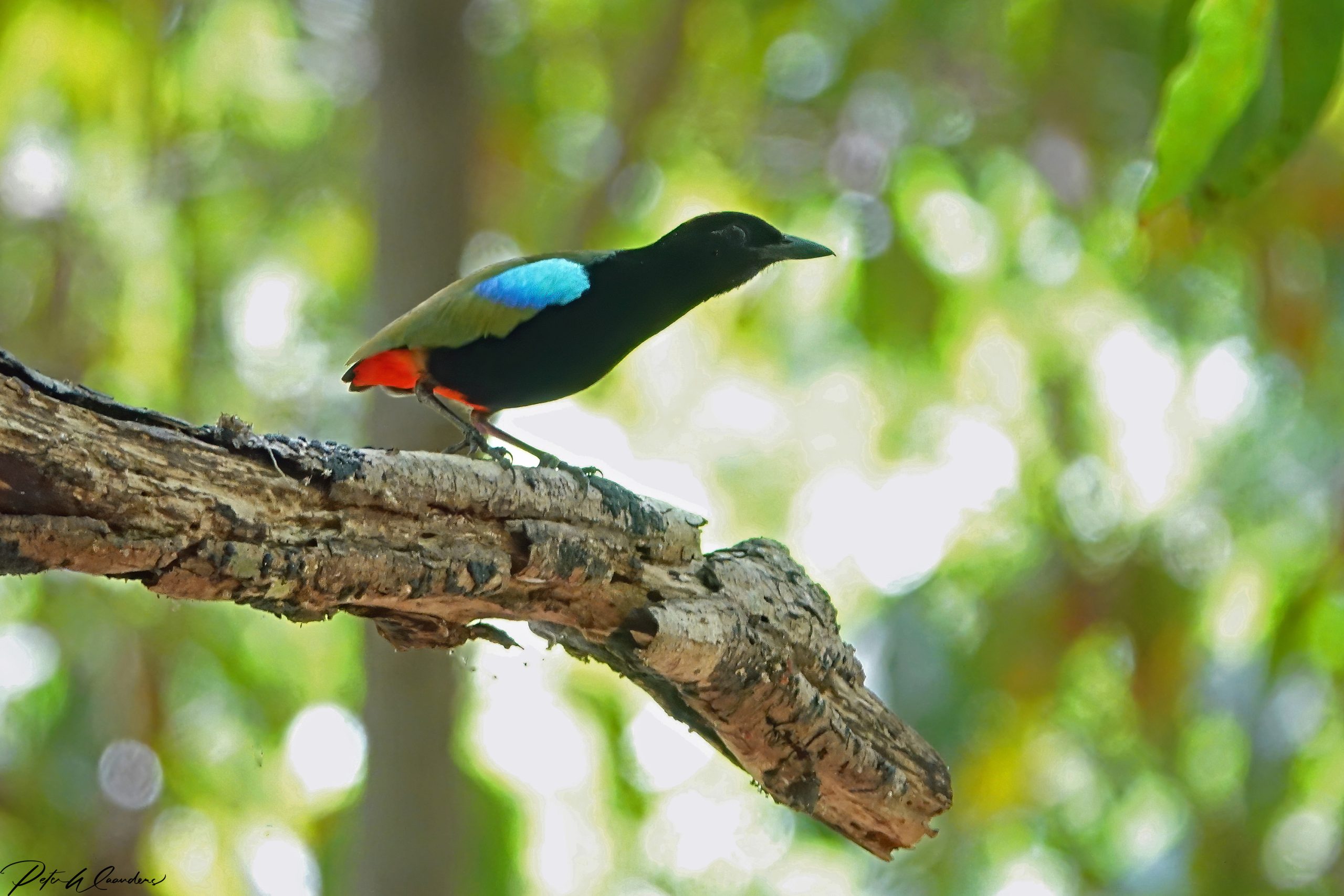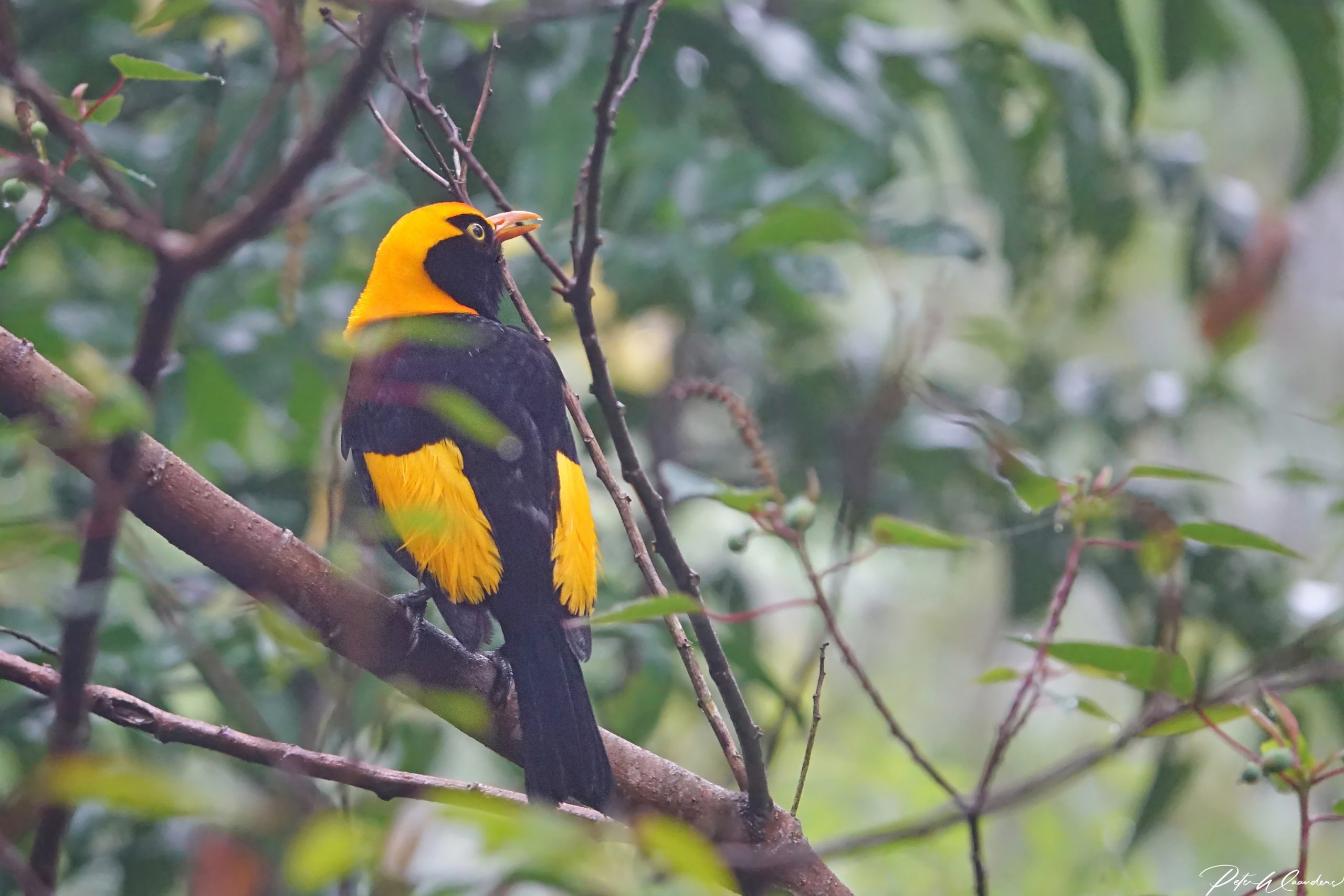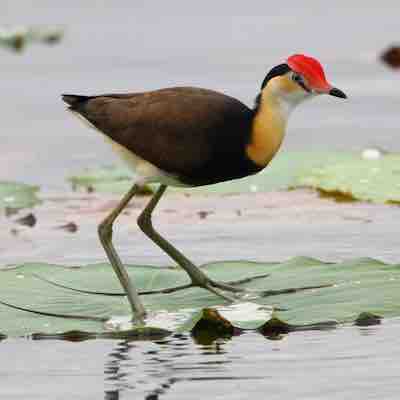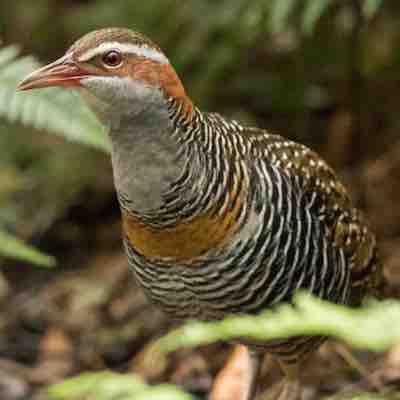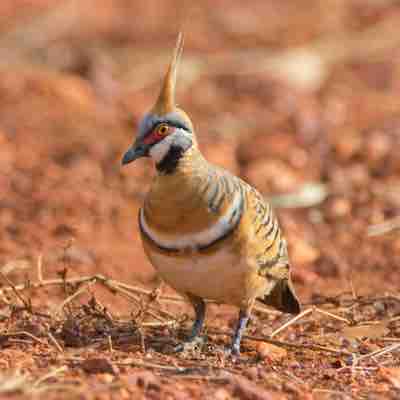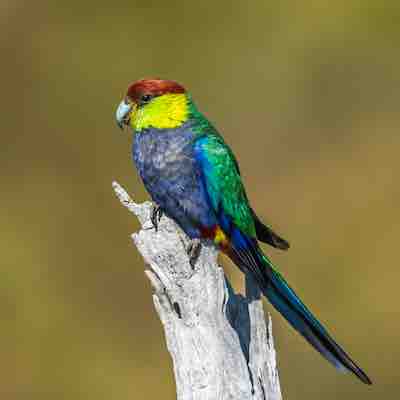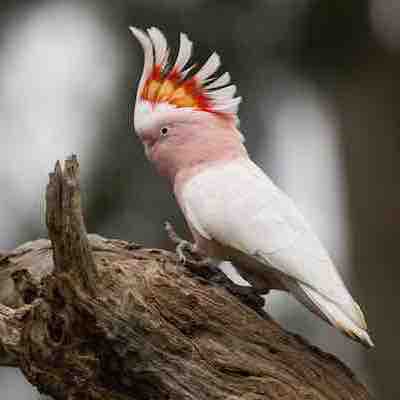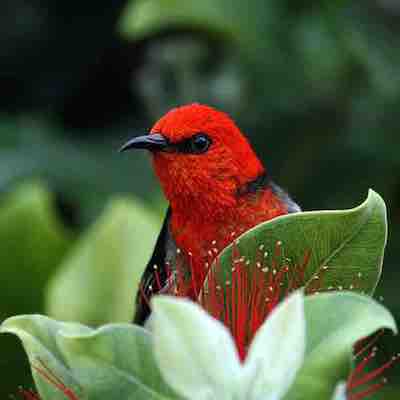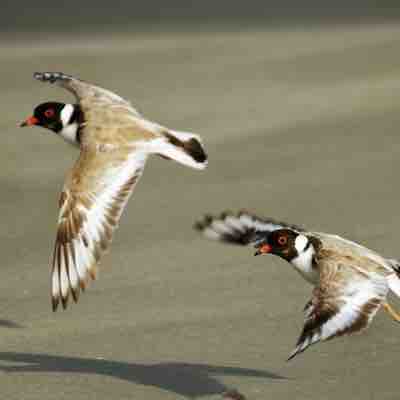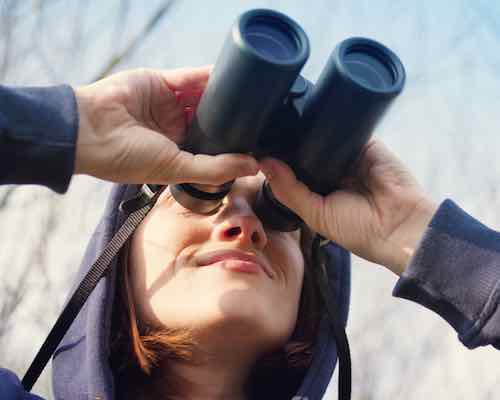Birding in Queensland
Southern Queensland’s eucalypt forests, woodlands, grasslands, scrub, rainforests, heaths and wetlands hold a great number of species with specialties such as Albert’s Lyrebird, Paradise Riflebird, Australian Logrunner, Red Goshawk, Pacific Baza, Black-breasted Button-quail and Eyrean Grasswren.
Northern Queensland has a count of around 490 species and its wet tropics produce a great range of rainforest specialties including Golden Bowerbird, Chowchilla, Victoria’s Riflebird and Southern Cassowary.
The dry areas produce Brolga and Sarus Crane, Black-throated Finch, and Carpentarian Grasswren. Unique to this state are Palm Cockatoo, Golden-shouldered Parrot, Yellow Honeyeater, Atherton Scrubwren, Fernwren, Macleay's Honeyeater and seasonally, the beautiful Buff-breasted Paradise-Kingfisher. There are a wealth of options for self-guided and guided birding and nature tours here.
Birding in North Queensland (The Wet Tropics)
Full Day Cairns Region (Wet Tropics) Birding Tour
The Cairns hinterland sits at the heart of Australia’s Wet Tropics, a patchwork of rainforest, woodland, mangrove, grassland and lagoon that supports more than 400 recorded bird species - 13 of them found nowhere else. Travelling with an expert local guide, a day in the field often turns up 90 plus species.
You can choose to visit one of the following areas:
Atherton Tableland – concentrating on the Atherton and Mareeba areas, with sought-after possibilities including Victoria’s Riflebird, Spotted Catbird, Chowchilla, Tooth-billed and Golden Bowerbirds, Yellow-breasted Boatbill, Scarlet, Bridled & Lewin’s Honeyeaters, Wompoo Fruit Dove, Comb-crested Jacana, Green Pygmy-Goose, Pink-eared Duck, Radjah Shelduck and Black-necked Stork.
Mount Carbine Tableland – concentrating on the Julatten and Mareeba areas, with sought-after possibilities including Great Bowerbird, Emerald Dove, Squatter Pigeon, Spectacled Monarch, Pale-yellow Robin, Noisy Pitta, Macleay’s Honeyeater, Blue-faced Parrot Finch, Australian Bustard, Red-winged Parrot, Pale-headed Rosella and Red-tailed Black Cockatoo.
Daintree – cross the Daintree River into Daintree National Park for possibilities including Lovely Fairy-wren, Yellow-spotted, Graceful & Dusky Honeyeaters, Shining Flycatcher, Chestnut-breasted Mannikin, Yellow Oriole, Double-eyed Fig Parrot, Pied Monarch, Yellow-breasted Sunbird, Mistletoebird, Azure Kingfisher (and possibly Little Kingfisher), Beach Stone Curlew, and with luck, Southern Cassowary.
Important Information
Private tour – departs any day, subject to availability of birding guide.
Tour Code: BC1CR
To add this tour to your itinerary enquiry, please include the tour code.
Tip: Let us add to your tropical north Queensland birding experience with a trip to the Great Barrier Reef to snorkel/dive – and to view thousands of seabirds roosting and nesting on a coral cay.
9 Day / 8 Night North Queensland Self-Drive Birding Tour – from Cairns
This very popular self-drive birding tour suits those who are happy to drive (very easy in Australia!) and enjoy the additional freedom and flexibility. Over the coming days you’ll sample an impressive variety of habitats, from tropical lowland and wet rainforests to open eucalypt woodland and dry savannah, giving you an excellent chance of a broad species list.
Day 1 - Arrive Cairns
Arrive at Cairns Airport, collect your hire car and make the short drive into town to check in to your hotel.
If you arrive with time to spare, jump-start your birding with a wander along the Centenary Lakes boardwalk or a stroll down the Esplanade, where shifting tides draw in waders and waterbirds such as Australian Pelican and Royal Spoonbill.
Overnight in Cairns
Day 2 - Cairns to Daintree
When you’re ready, leave Cairns and follow the Captain Cook Highway north along the Marlin Coast, skirting rainforest-clad ranges and palm-fringed beaches. Pass Port Douglas, continue through Mossman and arrive at the village of Daintree on the south bank of the Daintree River
This afternoon, look for birds such as Orange-footed Scrubfowl, Brahminy Kite, Pacific Baza, White-browed Crake, Buff-banded Rail, Emerald Dove, Superb Fruit-Dove, Gould’s Bronze Cuckoo, Dusky Honeyeater, Leaden Flycatcher, and Spotted Catbird.
Overnight in the village of Daintree.
Day 3 - Daintree to Julatten
Leave the Daintree behind and head south, passing once more through the little sugar-mill town of Mossman. From here, the road swings inland and climbs south-west into the uplands, winding through a patchwork of well-forested farmland, dry woodland and rainforest until you reach the township of Julatten.
Your base here is Kingfisher Park Birdwatchers Lodge, a haven run solely for wildlife enthusiasts. More than 219 bird species have been recorded either on the grounds or within a 1.5-kilometre radius – so have your binoculars at the ready.
After dusk, torch in hand, take a gentle wander around the lodge. With a bit of luck (and quiet footwork) you may encounter nocturnal treasures such as Striped Possum and Lesser Sooty Owl.
Overnight: Kingfisher Park Birdwatchers Lodge
Day 4 - Julatten
Today is yours to dedicate to birding, either in the company of an experienced local guide or under your own steam. You have three habitat options, each offering a distinctive set of species:
- High-altitude rainforest (Mount Lewis)
Currently closed – but when it reopens, a morning on the summit can produce Wet Tropics endemics such as Chowchilla, Fernwren, Mountain Thornbill, Grey-headed Robin, and - at the right time of year - both Tooth-billed and Golden Bowerbirds.
- Mid-altitude rainforest (around Kingfisher Park)
In the cooler months you might encounter Double-eyed Fig-Parrot, Yellow-breasted Boatbill, Papuan Frogmouth, Lovely Fairy-wren, Grey Whistler, Wompoo Fruit-Dove, Noisy Pitta, Spotted Catbird, Pied Monarch and Scarlet Honeyeater - plus, with a slice of luck, Blue-faced Parrot-Finch. Seasonal extras can include Metallic Starling, Barred Cuckoo-Shrike, Topknot and Superb Fruit-Doves, Grey-headed Robin and a dozen honeyeater species. Buff-breated Paradise Kingfishers are restricted to the wet, summer months.
- Dry savannah and open woodland
If you fancy a change of scenery, venture into the drier country for Australian Bustard, Red-winged Parrot, Blue-winged Kookaburra, Great Bowerbird, Little Friarbird, Galah, Apostlebird, Red-backed Fairy-wren, Squatter Pigeon and Pied Butcherbird. Channel-billed Cuckoo is an occasional seasonal bonus.
Overnight: Kingfisher Park Birdwatchers Lodge
Day 5 - Julatten to Atherton Tablelands
Depart Kingfisher Park Birdwatchers Lodge and continue south-west onto the Atherton Tablelands, pausing en route at Granite Gorge to meet the confiding Mareeba Rock-wallabies and at Lake Mitchell, whose wetlands often hold an excellent variety of waterbirds and the occasional Asiatic vagrant.
Your destination is Rose Gums Wilderness Retreat, a 230-acre private reserve where elegant tree-house cabins sit amid lush rainforest with sweeping mountain views. More than 160 bird species have been recorded here and Platypus frequent the creek pools. Your bird-enthusiast hosts will happily point you towards the property’s walking tracks, so take a checklist and see what you can find - perhaps Wompoo Fruit-dove, Atherton Scrubwren, Victoria’s Riflebird, Grey-headed Robin, Bower’s Shrike-thrush, Orange-footed Scrubfowl, Golden Whistler or Red-backed Fairy-wren; with luck you might even glimpse the rarely seen white morph of Grey Goshawk. Each tree-house has its own kitchen and barbecue, so you may wish to pick up supplies in a local town and enjoy dinner in the treetops.
Overnight: Rose Gums Wilderness Retreat.
Day 6 - Atherton Tablelands
Rise early and follow one of the property’s trails to enjoy a dawn chorus you will not soon forget. Afterwards return to your tree-house for breakfast before meeting your guide for a full day of private birding.
The Atherton Tablelands form part of the World Heritage-listed Wet Tropics and were once densely covered with high altitude rainforest. Today the area is one of upland dairy farming and rolling agricultural country, broken by pockets of remnant rainforest, colossal strangler figs, volcanic crater lakes and rich wetlands.
Your guide will lead you through several of these rainforest enclaves, including the picturesque crater lakes Eacham and Barrine - refuges for endemic wildlife such as the forest-dwelling Musky Rat-kangaroo, the smallest and most primitive of all kangaroos. Among the avian highlights you may encounter are Chowchilla, Tooth-billed Bowerbird, Golden Bowerbird, Spotted Catbird, Yellow-breasted Boatbill, Bridled Honeyeater, Lewin’s Honeyeater, Pale-yellow Robin, Australian Brushturkey, Grey Fantail, Eastern Whipbird, Brown Gerygone, Brown Cuckoo-Dove and White-headed Pigeon.
Later, explore the western fringe of the Tablelands, where the country grades into drier interior habitats and offers a different suite of species. Keep watch for Eastern Yellow Robin, Fuscous Honeyeater, Grey Shrike-thrush, Black-chinned Honeyeater, Varied Sittella, Leaden Flycatcher, Little Lorikeet, Brown Quail, Brolga and, with luck, the elusive Black-throated Finch.
Overnight: Rose Gums Wilderness Retreat
Day 7 - Atherton Tablelands to Cairns
Enjoy a final wander along Rose Gums’ forest trails this morning before checking out.
Afterwards, you might stop at a couple of nearby birding gems - Mount Hypipamee Crater National Park and the Hasties Swamp bird hide - before making the relaxed drive back to Cairns. On arrival, settle into your hotel for the night.
Overnight in Cairns
Day 8 - Great Barrier Reef
This morning your coach will collect you outside the hotel lobby and take you to the marina, for a full-day catamaran voyage to Michaelmas Cay on the outer Great Barrier Reef.
A cay is a low, sandy island that forms on top of coral reef. On Michaelmas Cay, the seabirds’ guano has nurtured a fringe of low scrub, creating a crucial breeding and roosting site. Thousands of terns wheel overhead: chiefly Sooty Terns and Brown Noddies, with Bridled, Black-naped, Crested and Lesser Crested Terns also in good numbers, and occasional Brown Boobies plus Great - and sometimes even Least - Frigatebirds. Wader migrants drop in too, though passerines are rare on this tiny, sparsely vegetated speck.
Lying roughly two hours offshore, the cay is surrounded by pristine coral gardens and luminous turquoise water alive with reef fish. You can view the marine life from a semi-submersible, snorkel straight off the beach or vessel, or opt for a guided snorkelling tour. Certified divers can arrange scuba dives, and introductory dives are also available.
Your cruise includes morning tea, a hot-and-cold buffet lunch, afternoon tea, snorkelling equipment and tuition, ecological presentations from marine biologists and a comfortable semi-submersible tour. After a memorable day, the crew will keep you entertained on the return sail to Cairns. From the marina a coach will transfer you back to your hotel for the evening.
Overnight in Cairns
Day 9 - Depart Cairns
This morning, check out of your hotel and drive to Cairns Airport to drop off your rental car, and check in for your departure flight.
Birding in South-east Queensland
3 Day Private Lamington National Park Birding Tour - from Brisbane
Day 1: After being collected from Brisbane, we begin our birdwatching tour at the Port of Brisbane, where the mangroves often yield Mangrove Honeyeaters, Mangrove Gerygone, Chestnut Teal, Black Swan and, with luck, a scatter of waders. A short drive brings us to the Lytton–Manly mangrove boardwalk, usually alive with Leaden Flycatcher, Spangled Drongo, Rufous Whistler, Collared Kingfisher and the trio of Red-backed, Variegated and Superb Fairy-wren. Between these two sites, both close to the airport, it is perfectly possible to log forty or fifty species before midday.
Nearby wetlands can add Wandering and Plumed Whistling-duck, Australasian Grebe, Comb-crested Jacana, Australasian Darter, Forest and Sacred Kingfisher, Rainbow Bee-eater, Double-barred Finch, Chestnut-breasted Mannikin, Australian Reed-warbler, Red-necked Avocet, Black-fronted and Red-kneed Dotterel, and White-headed Stilt.
After lunch on the Wynnum foreshore we drive to Lamington National Park and settle in at either Binna Burra Mountain Lodge or O’Reilly’s Rainforest Retreat. An afternoon walk in the rainforest may reveal such specialist birds as Regent Bowerbird, Satin Bowerbird, Green Catbird, Large-billed, Yellow-throated and White-browed Scrubwrens, White-throated Treecreeper, Black-faced, White-eared and Spectacled Monarchs, Eastern, Pale-yellow and Rose Robins, Eastern Whipbird, Rufous and Grey Fantails, Spotted Pardalote, Lewin’s Honeyeater, Eastern Spinebill, Red-browed Finch, King Parrot and Crimson Rosella.
After dinner, look for nocturnal wildlife which may include Tawny and Marbled Frogmouth, and Australian Boobook, among a variety of mammals.
Overnight: Binna Burra Mountain Lodge or O'Reilly's Rainforest Retreat
Day 2: A full day birding in Lamington National Park targeting rainforest species including Albert's Lyrebird, Paradise Riflebird, Rufous Scrub-bird, Regent and Satin Bowerbird, Green Catbird, Noisy Pitta, Wonga, White-headed, Brown and Top-knot Pigeons, Wompoo and Rose-crowned Fruit-Dove, Logrunner, Golden Whistler, Crested Shrike-tit, Brown Thornbill, Brown Gerygone, Spotted Pardalote, Lewin's Honeyeater, Eastern Spinebill, Red-browed Finch, King Parrot, Crimson Rosella, Glossy Black-Cockatoo, Black-faced, White-eared and Spectacled Monarchs, Fan-tailed Cuckoo and Shining Bronze-Cuckoo.
Day 3: After breakfast, we drive to Sharp Park near Canungra, a reliable site for Platypus and a good mix of birdlife including Australasian Figbird, Olive-backed Oriole, Noisy Friarbird, Azure and Forest Kingfishers, Laughing Kookaburra, Pale-headed Rosella, Buff-banded Rail, Double-barred Finch, Australian Wood Duck and Yellow-tailed Black Cockatoo.
We then make our way back to Brisbane, stopping at a selection of wetlands, grasslands and open forest sites. These habitats support a broad range of species such as Pacific Black Duck, Hardhead, Grey Teal, Great Crested Grebe, Australian Pelican, Black Swan, Whiskered Tern, several cormorants, Eurasian Coot, Comb-crested Jacana, Magpie Goose, Black-necked Stork, Little and Long-billed Corella, and all three of the smaller lorikeets – Rainbow, Scaly-breasted and Little.
A wide range of mammals is also possible in the region, including Eastern Grey Kangaroo, Whip-tailed, Red-necked and Swamp Wallaby, Red-necked and Red-legged Pademelon, Koala, Platypus, Short-beaked Echidna, Black and Grey-headed Flying-fox, Common Ringtail, Short-eared and Common Brushtail Possums, Sugar Glider, and both Long-nosed and Northern Brown Bandicoot.
Important Information
Departs from Brisbane - subject to availability of a birding guide
Also available as a self-drive.
Birding in other States & Territories of Australia
Top End
Birding
Comb Crested Jacana
Victoria
Birding
Buff-Banded Rail
Central Australia
Birding
Spinifex Pigeon
Western Australia
Birding
Red-capped Parrot
South Australia
Birding
Major Mitchell’s Cockatoo
Queensland
Birding
Scarlet Honeyeater
Tasmania
Birding

